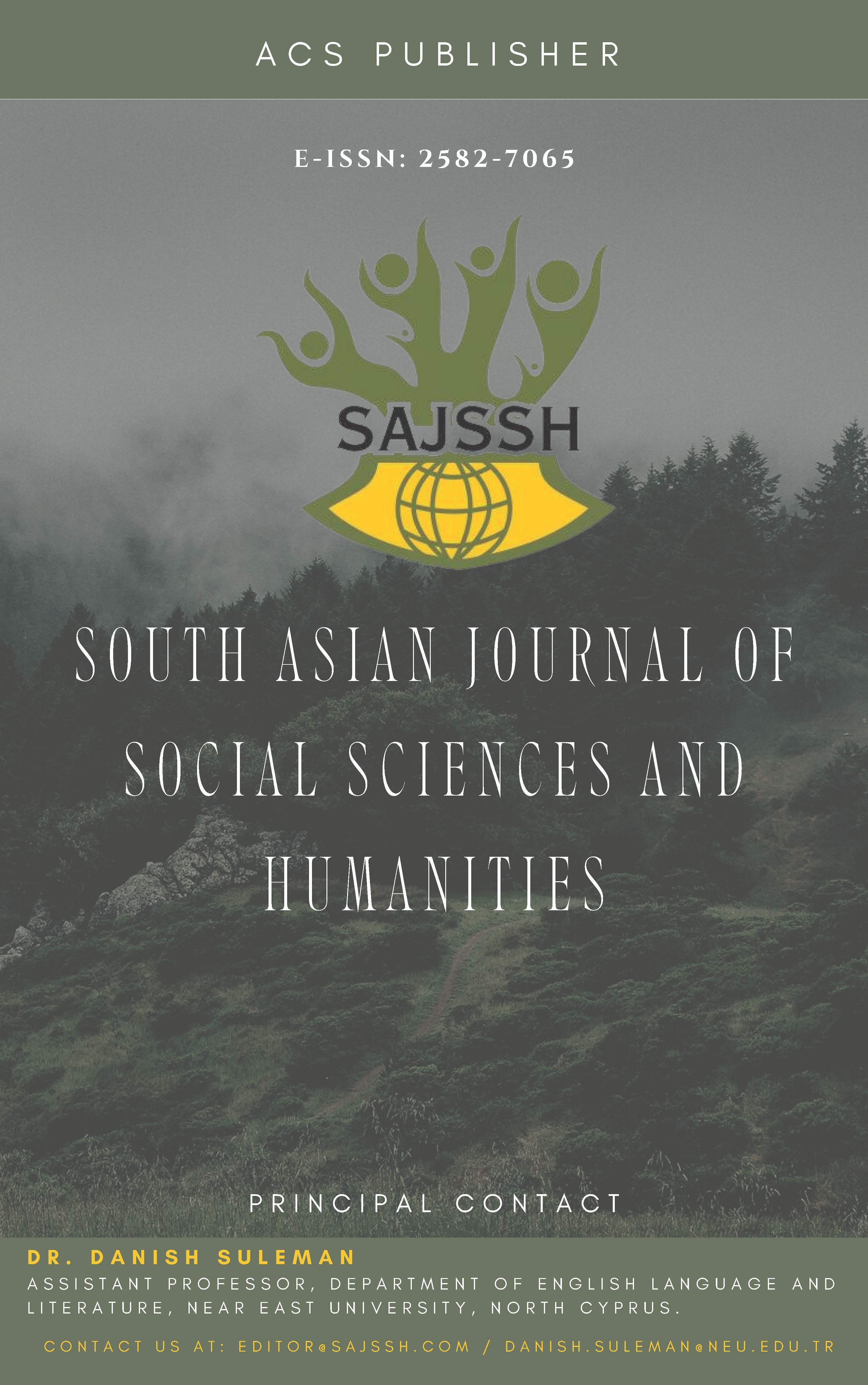Changing pattern of infertility: A qualitative study
DOI:
https://doi.org/10.48165/sajssh.2024.6303Keywords:
Marital relationship, societal perception, Assisted Reproductive TechnologyAbstract
Infertility has a major concern for couples globally. It affects marital relationship, physical – psychological health, social status of infertile couples. It poses significant challenges of social norms, cultural beliefs, emotional well-being, physical, psycho-social pressure. This qualitative research paper explores changing pattern of infertility focusing on medical facilities, marital relationships, social pressure and its challenges. By throwing light on these changing patterns, this paper seeks to contribute to ongoing discourse surrounding infertility. Through in depth interview, this qualitative study aims to provide a comprehensive understanding of how perception, experience and stigma of infertility have changed over time. It also highlight, affect of advancement in Medical facilities, changes in marital relationship, changes in social pressure and ongoing stigma related to infertility.
References
Bury, M. (1982). Chronic illness as biographical disruption, Soc. Health and Illness, 4(2), 167-182. http://onlinelibrary.wiley.com/doi/10.1111/1467-9566.e
Cwikel, J. Gidron, Y.,& Sheiner, E. (2004). Psychological interactions with infertility among women, European journal of Obstetrics and gynecology and reproductive biology, 117(2), 126-131. https://pubmed.ncbi.nlm.nih.gov/15541845/
Dr. Srishti. (2023). Infertility and patriarchy in India: causes and consequences, international Journal of Health Sciences and Research, 13(2), 352-362. https://doi.org/10.52403/ijhsr.20230748 (https://www.ijhsr.org )
Feldman-Savelsberg, P. (1999) Plundered kitchens, Empty Wombs: Threatened Reproduction and Identity in the Cameroon Grass fields, Ann Arbor: The University of Michigan Press.
Hollis, M., Larsen, U., Obono, O. and Whitehouse, (2009). The problem of infertility in High Fertility Population: Meanings, consequences and Coping Mechanisms in Two Nigerian Communities. Social Science & medicine, 68(11), 2061-2068. http://doi.org/10.1016/j.socscimed.2009.03.008
Jejeebhoy, S.J(1998). Infertility in India: Levels, patterns and consequences: Priorities for social science research. Journal of Family Welfare, 44(2), 15-24. http://www/.womenstudies.in
Jindal, U.N. and A. N. Gupta. (1989). Social problems of infertile women in India, International journal of fertility 34(1)-33. https://pubmed.ncbi.nlm.nih.gov/2565301/
Lunenfeld, B., & Van Steirteghem, A. (2004). Infertility in the third millennium: implications for the individual, family and society: condensed meeting report from the Bertarelli Foundation’s second global conference. Human reproduction update, 10(4), 317-326. https://pubmed.ncbi.nlm.nih.gov/15192057/
Martin, L. J., (2010), Anticipating infertility increasing genetic preservation and risk. Gender and society, 24(4), 526-545. https://journals.sagepub.com/doi/abs/10.1177/0891243210377172
Miall C. E., (1985). Perception of informal sanctioning and the stigma of involuntary childlessness. Deviant Behavior 6, 383. https://www.tandfonline.com/doi/abs/10.1080/01639625.1985.9967686
Mishra, K., Dubey, A., (2014), Indian women’s perspectives on reproduction and childlessness: narrative analysis, International journal of humanities and social science, 4,6(1),157-164 www.ijhssnet.com https://www.ijhssnet.com/journal/index/2472
National Family Health Survey (NFHS-5), 2019-21, India. Mumbai: International Institute for Population Sciences and Macro International. https://mohfw.gov.in
Obiyo, I.D. (2016), Impact of childlessness on Marriage (A study of married couples in Lowa community, Imo state, International journal of religion and cultural practice, 2(1), 9- 17 http://www.iiardjournals.orgPatel, M., (2016), The socio economic impact of infertility on women in developing countries. Facts views & vision in ObGyn, 8(1), 59. https://www.researchgate.net/publication/320877659_The_socioeconomic_impact_of _infertility_on_women_in_developing_countries
Patel, T. (1994), Fertility behavior: population and society in Rajasthan village. Chapter-3. Social and cultural context of fertility, Delhi: Oxford University Press, 74-105.
Pujari, S., Unisa, S. (2014), Failing fatherhood : A study of childless men in rural Andhra Pradesh, Sociological Bulletin, 63(1), 21-40 http://www.jstor.org/stable/43854951/
Singh P. B., Shukla U. (2015), Inability to conceive and treatment seeking behavior in Uttar Pradesh State in India, Canadian studies in population 42,(1-2), 1-12 https://www.researchgate.net/publication/281372596_Inability_to_Conceive_and_Tre atment_Seeking_Behaviour_in_Uttar_Pradesh_State_in_India
Tabong, P. T. N. and Adongo, P.B. (2013), Infertility and childlessness: a qualitative study of the experiences of infertile couples in Northern Ghana, BMC Pregnancy and Childbirth, 13(72). http://www.biomedcentral.com/1471-2393/13/72
Unisa S.(1999), Childlessness in Andhra Pradesh, India: treatment seeking and consequences. Reproductive Health Matters, 7(13), 54-64. https://www.jstor.org/stable/3775703
Unisa S.(2010), Infertility and treatment seeking in India : Findings from District Level Household Survey. F, V&V IN OBGYN, MONOGRAPH, 59-65 http://www.jstor.org/stable(3775703)
Whiteford M. Linda and Gonzalez Lois (1995), Stigma : the hidden burden of infertility, Social science & medicine, 40(1),27-36 https://pubmed.ncbi.nlm.nih.gov/7899919/
World Health Organization, (1991). Infertility, A tabulation of available data on prevalence of primary and secondary infertility. Programme on mental and child health and family planning, https://www.who.int
World Health Organization, (2023). 1in 6 people globally affected by infertility :WHO https://www.who.int
Zang, F., Lv, Y., Wang, Y., Cheng, X., Yan, Y., Zang, Y., Wang, Y, (2021). The social stigma of infertile women in Zhejiang Province, China: a questionnaire- based study. Zhang et al. BMC Women’s Health 21:97. https://doing.org/10.1186/s12905-021-01246-z
Downloads
Published
Issue
Section
License
Copyright (c) 2025 South Asian Journal of Social Sciences and Humanities

This work is licensed under a Creative Commons Attribution 4.0 International License.





